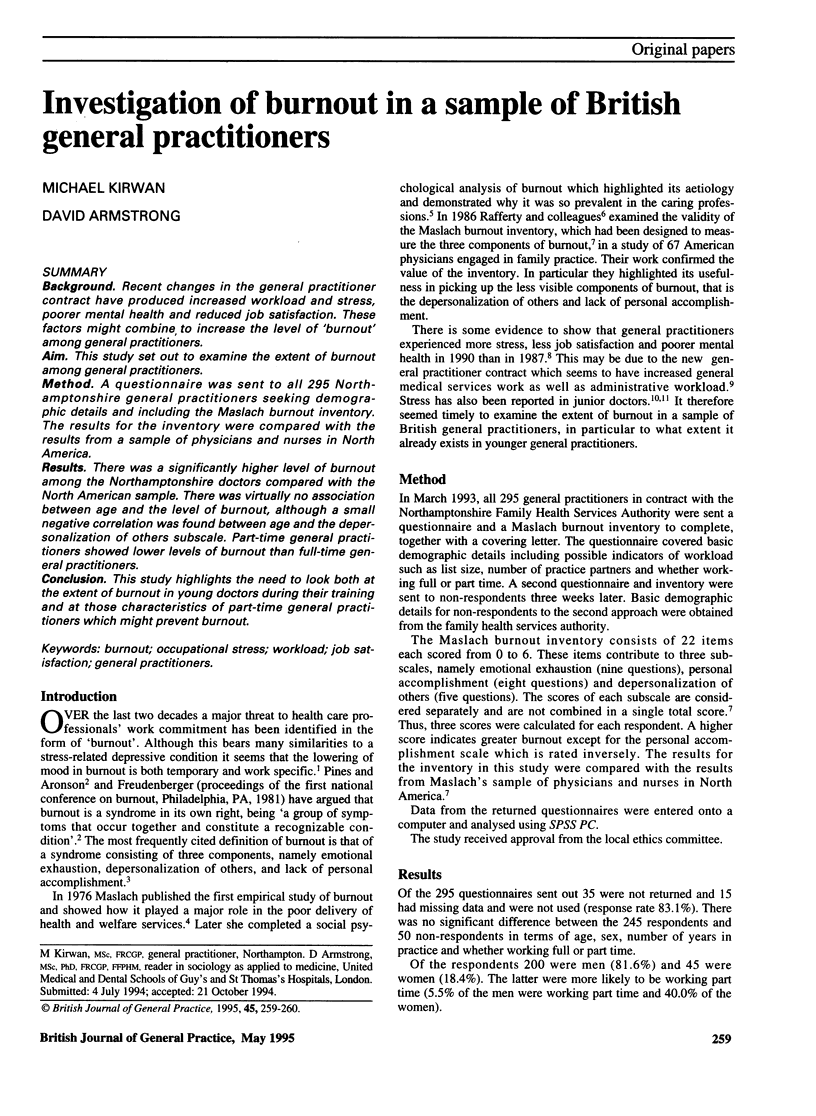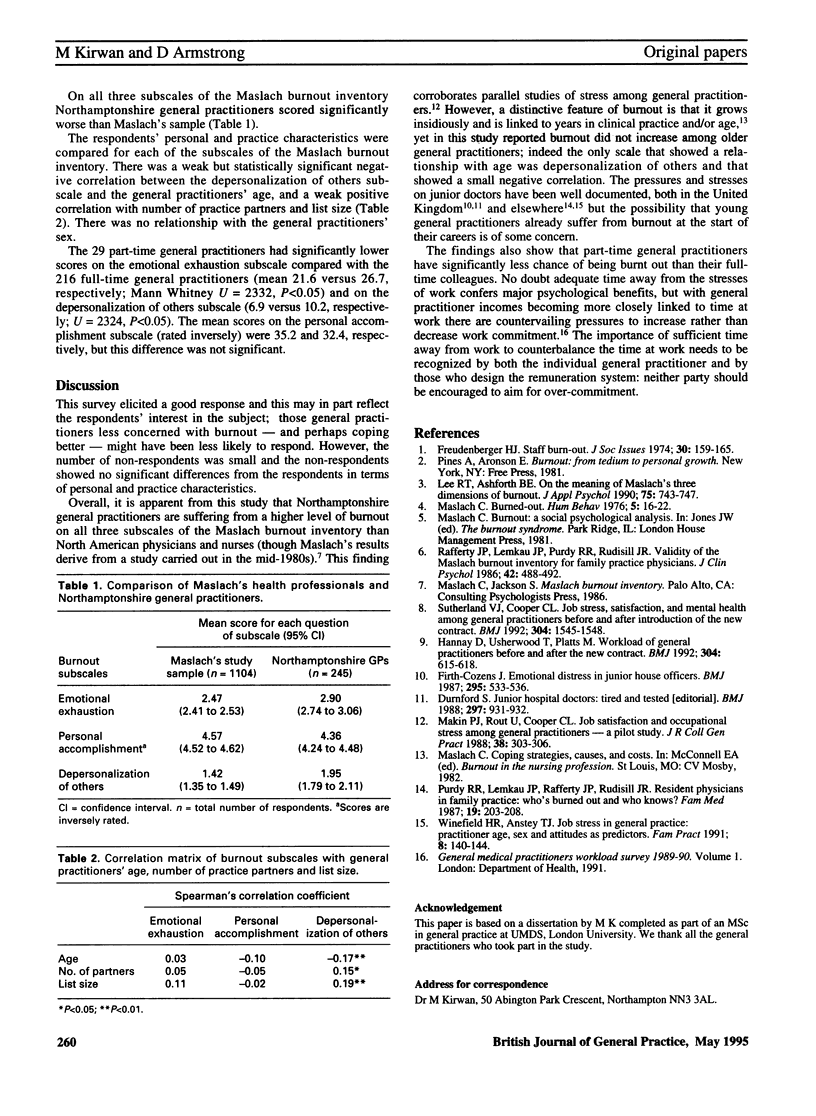Abstract
BACKGROUND. Recent changes in the general practitioner contract have produced increased workload and stress, poorer mental health and reduced job satisfaction. These factors might combine to increase the level of 'burnout' among general practitioners. AIM. This study set out to examine the extent of burnout among general practitioners. METHOD. A questionnaire was sent to all 295 Northamptonshire general practitioners seeking demographic details and including the Maslach burnout inventory. The results for the inventory were compared with the results from a sample of physicians and nurses in North America. RESULTS. There was a significantly higher level of burnout among the Northamptonshire doctors compared with the North American sample. There was virtually no association between age and the level of burnout, although a small negative correlation was found between age and the depersonalization of others subscale. Part-time general practitioners showed lower levels of burnout than full-time general practitioners. CONCLUSION. This study highlights the need to look both at the extent of burnout in young doctors during their training and at those characteristics of part-time general practitioners which might prevent burnout.
Full text
PDF

Selected References
These references are in PubMed. This may not be the complete list of references from this article.
- Durnford S. Junior hospital doctors: tired and tested. BMJ. 1988 Oct 15;297(6654):931–932. doi: 10.1136/bmj.297.6654.931. [DOI] [PMC free article] [PubMed] [Google Scholar]
- Firth-Cozens J. Emotional distress in junior house officers. Br Med J (Clin Res Ed) 1987 Aug 29;295(6597):533–536. doi: 10.1136/bmj.295.6597.533. [DOI] [PMC free article] [PubMed] [Google Scholar]
- Hannay D., Usherwood T., Platts M. Workload of general practitioners before and after the new contract. BMJ. 1992 Mar 7;304(6827):615–618. doi: 10.1136/bmj.304.6827.615. [DOI] [PMC free article] [PubMed] [Google Scholar]
- Lee R. T., Ashforth B. E. On the meaning of Maslach's three dimensions of burnout. J Appl Psychol. 1990 Dec;75(6):743–747. doi: 10.1037/0021-9010.75.6.743. [DOI] [PubMed] [Google Scholar]
- Makin P. J., Rout U., Cooper C. L. Job satisfaction and occupational stress among general practitioners--a pilot study. J R Coll Gen Pract. 1988 Jul;38(312):303–306. [PMC free article] [PubMed] [Google Scholar]
- Purdy R. R., Lemkau J. P., Rafferty J. P., Rudisill J. R. Resident physicians in family practice: who's burned out and who knows? Fam Med. 1987 May-Jun;19(3):203–208. [PubMed] [Google Scholar]
- Rafferty J. P., Lemkau J. P., Purdy R. R., Rudisill J. R. Validity of the Maslach Burnout Inventory for family practice physicians. J Clin Psychol. 1986 May;42(3):488–492. doi: 10.1002/1097-4679(198605)42:3<488::aid-jclp2270420315>3.0.co;2-s. [DOI] [PubMed] [Google Scholar]
- Sutherland V. J., Cooper C. L. Job stress, satisfaction, and mental health among general practitioners before and after introduction of new contract. BMJ. 1992 Jun 13;304(6841):1545–1548. doi: 10.1136/bmj.304.6841.1545. [DOI] [PMC free article] [PubMed] [Google Scholar]
- Winefield H. R., Anstey T. J. Job stress in general practice: practitioner age, sex and attitudes as predictors. Fam Pract. 1991 Jun;8(2):140–144. doi: 10.1093/fampra/8.2.140. [DOI] [PubMed] [Google Scholar]


